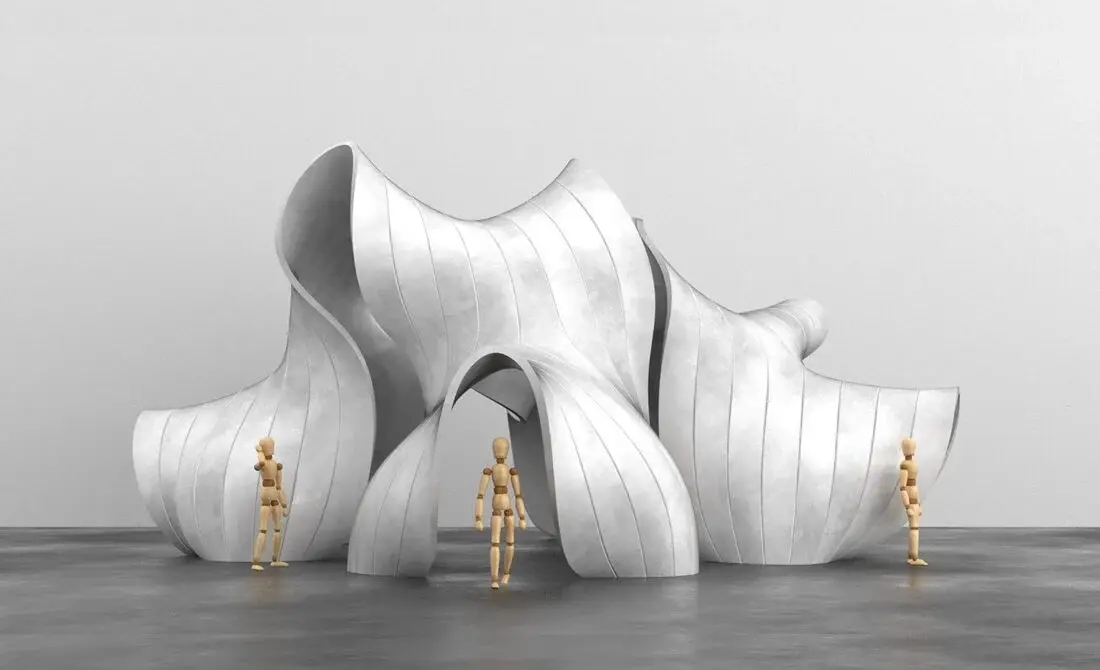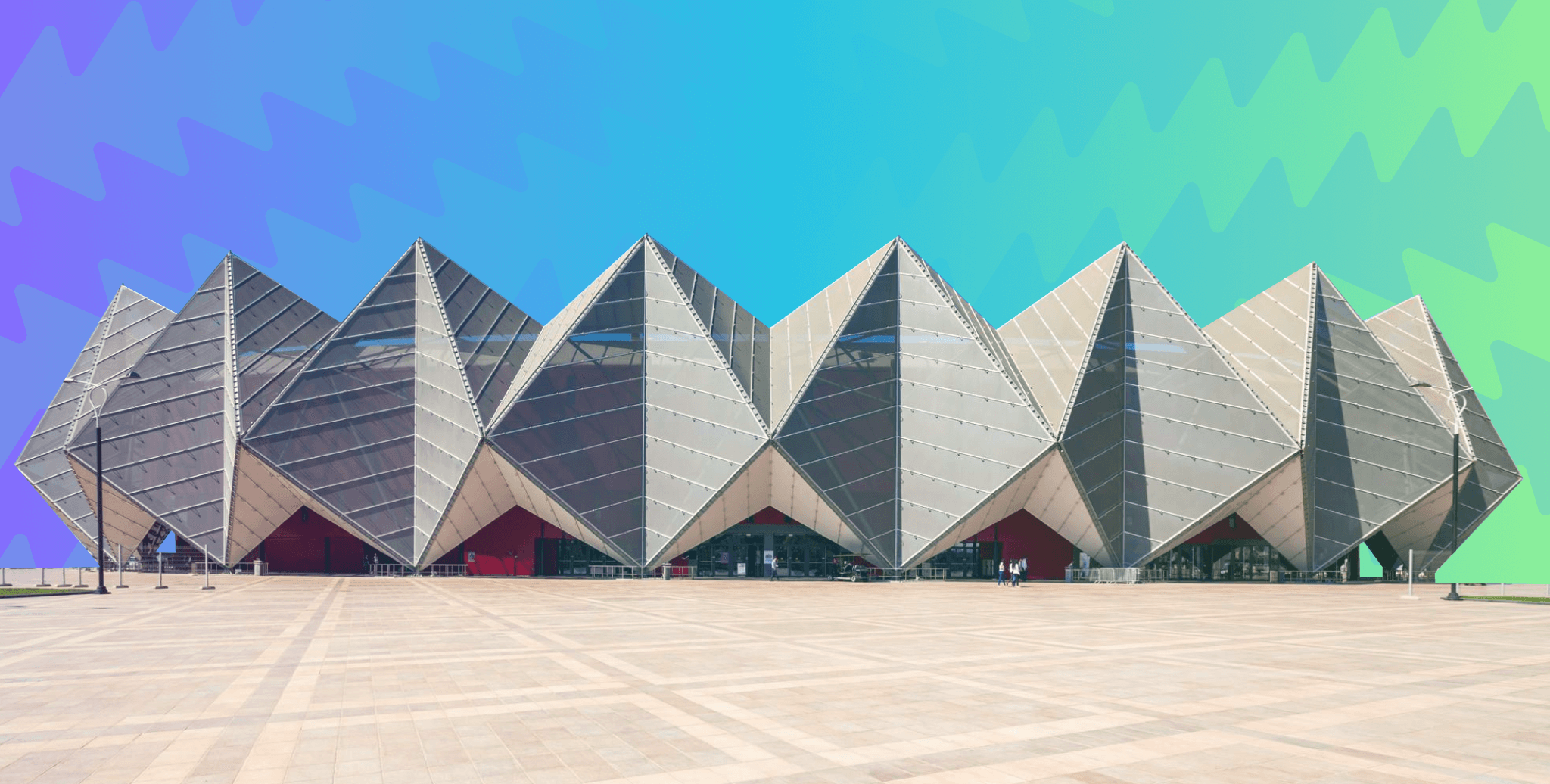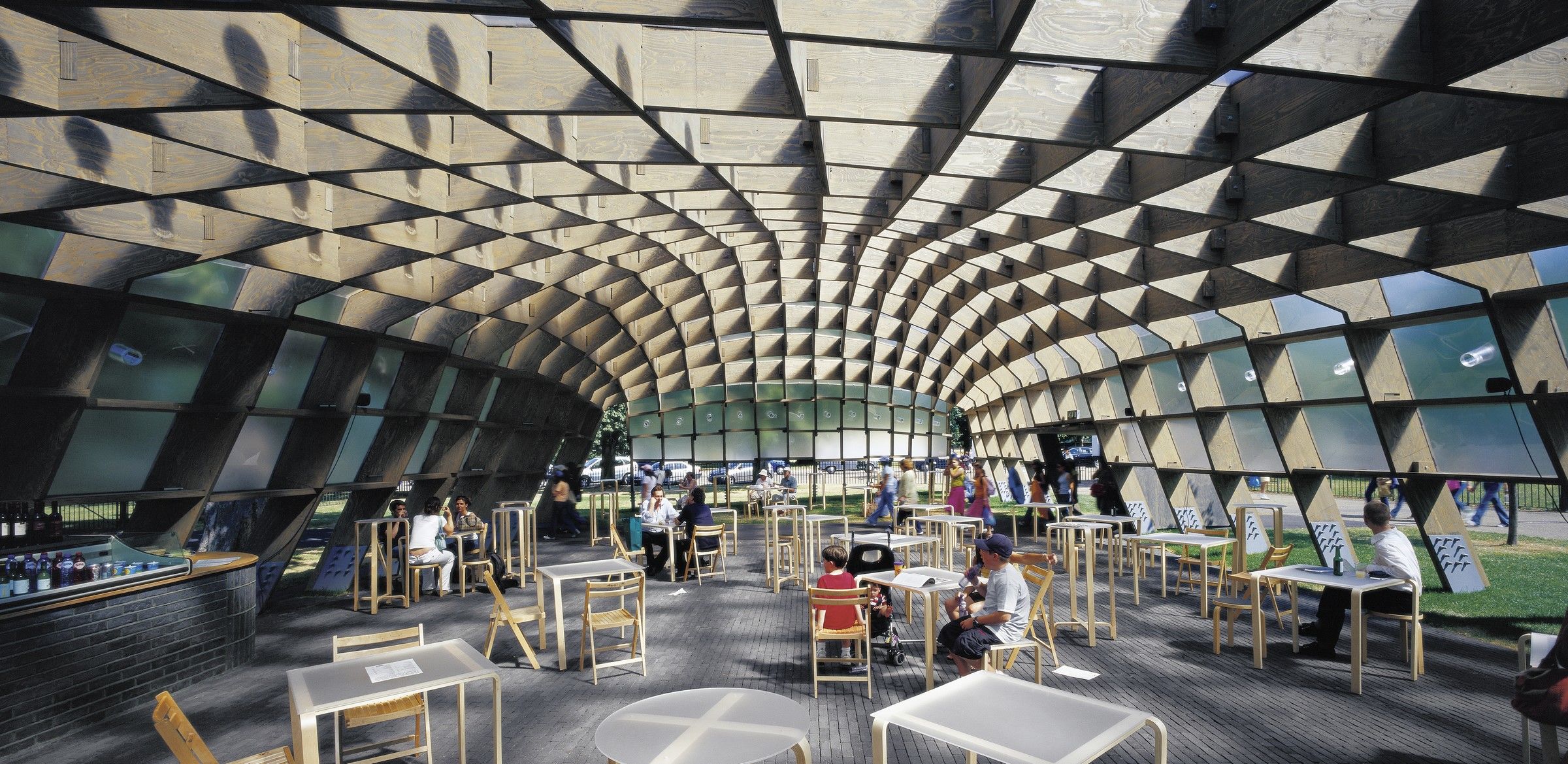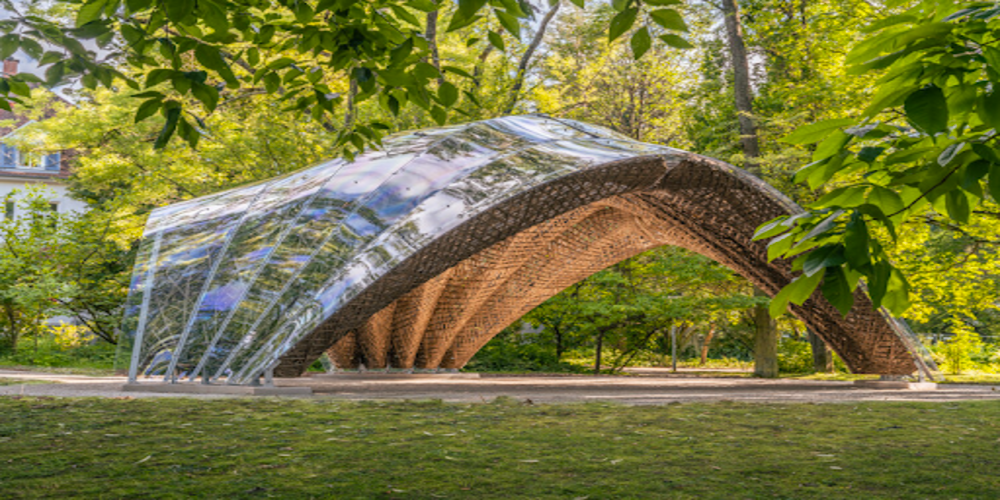
We are witnessing the development of multiple technology-led design techniques and methodologies that have come to greatly enhance the accessibility and efficiency of design processes worldwide. These innovative concepts have had a profound and positive impact on how an architectural design is perceived and initiated. Among them, computational design stands out as a particularly noteworthy application, with the involvement of intricate geometric building facades built using computational design through the utilisation of mathematical parameters and constraints. This approach empowers architects to push the creativity boundaries and achieve remarkable results, with intricate yet futuristic facade design patterns.
The age of computational design not only helps bring out innovative building fabrics, but also enables architects to craft efficient and interactive designs with precision. With the expanding design landscape, we can be looking at various forms of modern facade designs, including Parametric (utilising parameters and rules), Generative (employing algorithms), and Algorithmic (creating design models through algorithms). Amidst the ease of fabricating intricate forms using these design technologies, how can we not look at some remarkable Building Facades built using computational Design within the same realm? Let’s look at some examples of digital fabrication that revolutionised the perception of facade design architecture.
List of 19 Impressive Building Facades Built Using Computational Design
1. Guggenheim Museum Bilbao, Biscay

This architecture building facades built using computational design was created by the Canadian-American architect Frank Gehry, the Guggenheim Museum is a blended form of modern and contemporary art that sits with titanium draped in an industrial silhouette. Its exterior consists of 33,000 thin titanium sheets and dynamically shifts colours in response to varying light and weather conditions. This masterpiece's iconic curvilinear panels are crafted through computational design, combined with limestone and glass, to create a harmonious urban and structural composition.
2. The Tokyo Skytree, Tokyo

The Tokyo Skytree, Japan's second tallest structure at 634 metres, features a graceful cylindrical shape that tapers as it ascends. With broadcasting and observation facilities providing panoramic city views, this architectural marvel blends traditional Japanese design with engineering, showcasing a seamless fusion of craft and innovation.
This building facade built using computational design exemplifies parametric architecture, harmonising technology and design. By integrating precisely calculated angles and dimensions in the lattice structure, the design achieved both minimal weight and sustained strength, showcasing an optimal balance between form and function.
Read more: How Is Computational Design Used in Architecture in 2024?
3. Walt Disney Concert Hall, California

The Walt Disney Concert Hall, designed by Frank O. Gehry is a striking blend of contemporary and modern building facades built using computational design. With its edgy materials and computer-aided structural design, this marvellous building design stands out as a bold statement. Its spatial analysis promises a truly futuristic experience. Amidst the art and innovation, this stainless steel building facade construction embodies silver sails, shaped through computational design. The surging waves on its facade flow rhythmically with the structure, forming a fluid anatomy.
4. Agora Garden, Taipei

Agora Garden in Taipei, Taiwan, is an iconic symbol of sustainable architecture, featuring intertwined towers in a captivating spiral design inspired by DNA. The innovative design incorporates luxury apartments, retail space, and a rooftop garden with a solar-powered swimming pool, reflecting the overall design’s commitment to sustainability. The use of parametric design is quite prominent in the making of this project. From calculated fragments of the building facade to achieving a spiral design using computer algorithms, this building facades built using computational design seamlessly combine art and engineering.
Read more: Functional And Aesthetic: 10 Impressive Parametric Buildings From Around The World
5. Bayerische Motoren Werke AG (BMW) Welt, Munich

The Bayerische Motoren Werke AG (BMW) Welt in Munich, is an architectural marvel that blends form and function. This modern facade design was crafted by an Austrian firm, this double-cone structure serves as a versatile hub for BMW that functions as a delivery centre, exhibition space, and event venue. The building's dynamic facade architecture and form were achieved through computational design, resulting in a visually appealing glass facade design architecture that harmoniously integrates into the structural lattice while maintaining a lightweight profile, combining aesthetics with functionality.
Also Read: How to start a career in facade design? Education & Software Skills Explained!
6. Yas Hotel, Abu Dhabi

Asymptote Architects' design of this hotel mesmerises its visitors with a curvilinear steel and glass grid shell facade spanning 217 metres. Its exterior fabric boasts around 5,000 intricately cut glass panels shaped like diamonds. Through meticulous computational design, the curvature enhances the reflectiveness and complexity of this dynamic structure. In addition, the complex facade architecture has been accentuated with a vital LED (light emitting diode) lighting system and justifies the approach of implementing computational design in creating intricate patterns. The coordinated play of light and form gives it an animated characteristic.
7.Al Bahar Towers, Abu Dhabi

Aedas Studio's Al Bahar Towers offer a unique perspective to contemporary skyscraper design methods by crafting its design using computational methods.The architectural marvel stands as a potent solution to climate change, with its building facade systems setting new standards of design efficiency and achieving visual excellence. The Al Bahar Towers epitomises the possibilities of computational design. Inspired by the traditional Arab mashrabiya screens, its structure flaunts an intricate system of sunshades that not only appear aesthetically pleasing but also optimise the natural lighting.
Read more: 10 Incredible Parametric Wall Designs Around The World That Will Blow Your Mind
8. Bahrain World Trade Centre, Bahrain

The Bahrain World Trade Center, designed by Atkins, is an iconic project in Manama, Bahrain, that flaunts a blend of design consciousness with innovative building facades built using computational design. The building harnesses wind power with turbines to generate energy for over 300 homes, symbolising the integration of technology, parametric commercial facade design. It’s the first skyscraper in the world to integrate wind turbines into its design. The unique shape of the twin towers is a result of computational design application and systemised parametric modelling techniques. This structure also stands as a prominent example of successfully amalgamating eco-friendly building facades with technology, as the first skyscraper in the world to integrate wind turbines into its design.
9. Heydar Aliyev Centre, Baku

Designed by Zaha Hadid Architects, the Heydar Aliyev Centre emerges gracefully from the surrounding topography. Its dynamic facade architecture showcases a poetic interplay of undulating layers with the innovative use of Glass Fibre Reinforced Plastics (GFRP) and Glass Fibre Reinforced Concrete (GFRC) panels adds to its allure. The Heydar Aliyev Centre exemplifies computational design, achieving organic forms and fluidity through parametric modelling. The surrounding landscape blends harmoniously with the building fabric, seamlessly integrating the curvilinear architecture form.
Read more : Parametric ceiling: Top 10 Innovative Design Ideas for a Spectacular Interior
10. Kolon Headquarters, Seoul

The Kolon Headquarters, designed by Morphosis, combines parametric design and sciography, creating an interplay of shadows and views. The grand entry and multi-storey atrium feature a folding, high-tech Aramid fabric, while the facade architecture draws attention with its brise-soleil system using Glass Fibre Reinforced Plastic (GFRP), making it a one-of-its-kind architectural wonder. The elevation of Kolon Headquarters features complex patterns via algorithmic practices and parametric modelling. These building facades are not only visually distinct, but are also environmentally responsive and structurally secure.
11. V&A Dundee, Dundee

Designed by internationally renowned architect Kengo Kuma, the V&A Dundee is the only branch of the Victoria & Albert Museum in London. It is a modern celebration of Scotland’ cultural significance and innovation. Its striking angular and dimensional design makes it a remarkable parametric work of art. Exhibiting artistically from inside-out, the museum's envelope is adorned with complex silhouettes that optimise ventilation, energy efficiency, and natural lighting. These intricate patterns were created by implementing computation design, creating novel facades.
12. Hangzhou Tennis Centre, Hangzhou

A pronounced parametric building facade, the Hangzhou Tennis Centre was designed by NBBJ, with the concept branching from the banks of Hangzhou’s West Lake. The flattering curves are reminiscent of flower petals and were developed from a circular arc, culminating in a stunning design composition.The design team of the Hangzhou Tennis Centre implemented digital modelling and computational algorithms in the complex facade, considering factors such as solar shading, ventilation, and structural integrity. This approach ensured a dynamic facade architecture design, optimising the building's performance and functionality.
13. Serpentine Pavilion, London

The Serpentine Pavilion in London is a highly anticipated event within the architecture community, showcasing celebrated designs from renowned architects such as Rem Koolhaas, Zaha Hadid, and Bjarke Ingels. This architectural marvel embraces computational design, utilising algorithms and precise calculations to create seamless facades, and an innovative and captivating parametric lattice structure. Blending into the urban fabric, the Serpentine Pavilion in London's envelope is built with spatial context and efficient materials.
14. Son-O-House, North Brabant

The Son-O-House, a captivating architectural marvel by NOX, breaks the boundaries of traditional design by incorporating sound as an integral element. With a unique sound installation, this parametric masterpiece becomes an interactive medium, where new sound and activity patterns inspire the dynamic fabric of the structure. The building’s facade stands distinct and is not your regular building, with its envelope developing from bodily movements. These movements emerge from small scale movements around a drawer or a sink and further integrate through the entire structure.
15. Burnham Pavilion, Chicago

The Burnham Pavilion stands out as an exceptional parametric modern facade design with its intricate urban context. Its multi-directional facade geometry creates a captivating design, with open sides sandwiched between two roof planes and a podium. The superimposed structures showcase Burnham's system of organisation, integrating the historic urban planning into its aluminium structure. The fluid form of the inner and outer silhouette wraps around the metal frame, serving as, both, the building fabric and a screen for video installations inside the pavilion.
Read more : 10 Unbelievable Parametric Furniture That Are Perfect Examples Of Innovation
16. Water Cube, Beijing (Beijing National Aquatics Centre)

The Water Cube is a remarkable blend of modern and traditional Chinese architecture, flaunting a unique parametric structure of building facades built using computational design. The square-shaped design is reminiscent of webs or water bubbles that seamlessly combines the contrasting design methods on the building facade. This monumental masterpiece stands as a functional symbol, harmoniously incorporating yin-yang contrast with the cubic sports venue. The facade architecture of the structure employs computational design, creating a typical building envelope and parading a uniqueness that makes up the building's visual aesthetic.
17. The Leadenhall Building (Cheesegrater), London
%2c%20London.jpg?width=553&height=369&name=The%20Leadenhall%20Building%20(Cheesegrater)%2c%20London.jpg)
The Leadenhall Building, affectionately known as the Cheesegrater due to its distinctive wedge-like shape, features a cutting-edge facade designed using computational methods. Completed in 2014, this iconic skyscraper in Europe stands at 224 meters and houses a unique structural system that maximizes efficiency and minimizes material use. The facade's striking appearance is achieved through advanced parametric modeling, enabling precise control over intricate details like the building's tapering form and external bracing elements. Computational simulations were employed to optimize solar shading and thermal performance, ensuring a sustainable design that meets stringent environmental standards.
18. Torre Reforma, Mexico City
Torre Reforma in Mexico City is a standout example of a skyscraper designed with sustainability at its forefront. The building’s facade features an elegant rippled pattern and is a product of computational design tools. The tower's asymmetrical shape is optimised for structural stability while minimising wind resistance, a feat made possible through extensive computational modelling. Additionally, the facade incorporates intelligent shading elements that respond dynamically to solar exposure, enhancing energy efficiency and occupant comfort.
19. One Central Park, Sydney
One Central Park in Sydney features a striking facade that integrates lush greenery into its design, creating a harmonious blend of nature and architecture. Computational techniques were employed to optimise the placement and arrangement of plants, ensuring optimal sunlight exposure and environmental sustainability. The facade's innovative use of vegetation not only enhances the building's aesthetic appeal but also contributes to air quality and urban biodiversity.
Summing It Up
As we segue into introducing technology within different architectural and building facade, we are met with some surprising perspectives and awe-inspiring building facades built using computational design. Gauging the ongoing trends, the phase of parametric design is only expected to grow in the coming years, a perfect blend of traditional and cultural character along with art that was birthed from technology.
Interested in learning more about Computational Design? Here’s something that might interest you. Novatr offers you a Master's Computational Design Course that will help you understand computation in different design fields with industry workflows, and advanced tools for a concrete foundation in computational design. Learn high-performance computational BIM and building analysis via a live industry project—bag opportunities along with professional certification, endless career possibilities and upskilling.
If you wish to learn about the impacts of computational design in the AEC industry, please refer to our Resource page for more insightful blogs.
Was this content helpful to you







